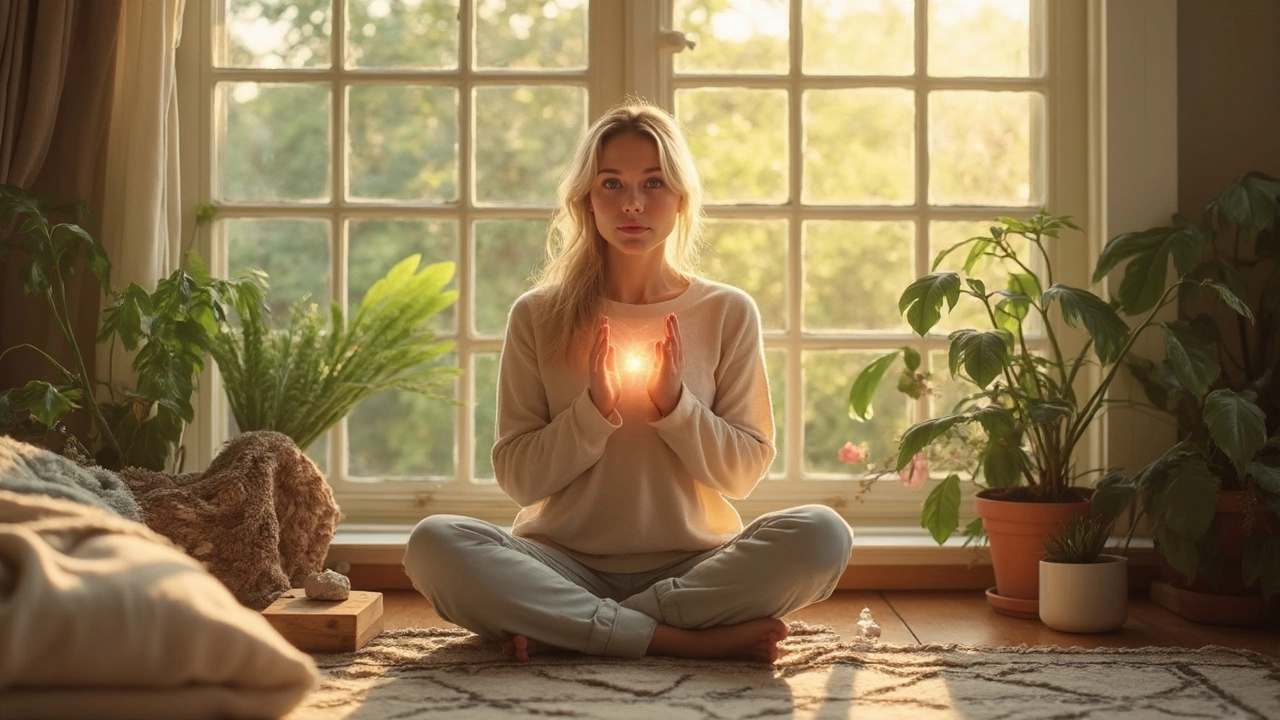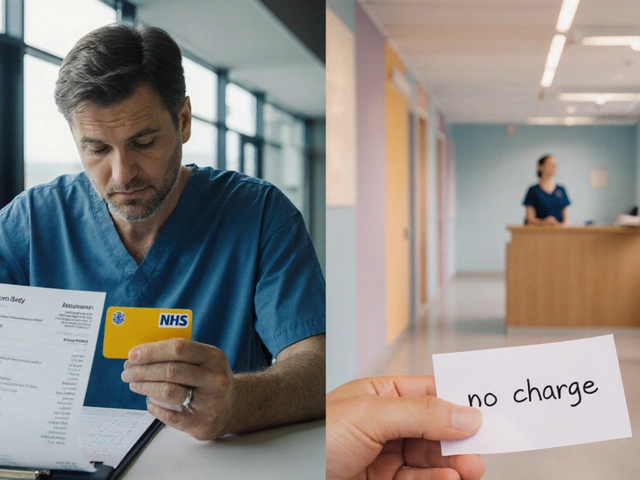Imagine walking into a softly lit room. The air feels calm, someone greets you with a gentle smile, and you’re asked a simple question: “How are you feeling today?” Not in a polite, surface-level way, but a genuine one. You’re not just there to untangle a knotty shoulder or soothe aching calves. This session is about resetting at a much deeper level—one you can’t even see. That’s the big reason energy healing massage is suddenly sparking conversations everywhere, from Sydney day spas to meditation hangouts in LA. It promises something uniquely different from the classic back rub: a reset for your physical body, your emotions, and sometimes even a feeling that your spirit just got a tune-up.
What’s got so many people lining up to try it? Part of it is pure curiosity—can someone’s hands really move your internal energy around? But more and more, it’s about a craving for peace that doesn’t just hit your muscles, but your mind and soul. In a world where stress hides almost everywhere, people want something that feels like a full-body exhale.
Understanding Energy Healing Massage
Energy healing massage is a blend of ancient wellness wisdom and contemporary massage therapy. Think of it as a hybrid practice that taps into the body’s energy fields (often called chi, prana, or life force), aiming to clear out blockages, recharge your natural flow, and leave you feeling lighter—even if the technique looks simple. What sets it apart from a traditional Swedish or deep tissue massage? It’s not about digging deep into tissue or working out muscle knots, but about using hands as gentle tools to sense, redirect, and balance unseen energy currents in your body.
During a typical session, the practitioner might place hands just above your body or make soft, almost weightless contact rather than applying heavy pressure. This approach doesn’t require oils, and you might stay fully clothed. The intent is to restore flow and harmony in your energy channels—think of it a bit like giving your internal wiring a reboot. And while the physical touch is usually light, many say the effects run deep.
Is energy healing massage a real therapy?
Skepticism is natural—anything you can’t see or measure easily feels a bit out-there, right? But thousands swear by the impact. Holistic healers say that while it’s tricky to ‘prove’ with blood tests or x-rays, clients consistently report a dramatic sense of calm, emotional release, and even physical comfort. Most Western doctors now agree that touch and intention alone can help calm the nervous system, reducing stress hormones. And while research on measurable ‘energy’ is still early, the emotional and relaxation benefits are hard to argue away.
Origins of Energy Healing Practices
The backbone of energy healing goes back centuries—way before it hit spa menus. Ayurveda in India talks about prana, the universal life force, while Traditional Chinese Medicine focuses on qi (chi), flowing through pathways called meridians in the body. Both systems believe illness isn’t just about cells breaking down; it’s about stuck or unbalanced energy.
Japanese practices, like Reiki, and some Indigenous healing traditions also work with these invisible currents. Whether it’s laying on hands, sacred stones, or tapping gentle points, the common thread is the belief that energy needs to move freely to maintain health. Isn’t it wild to realize that nearly every culture already figured out, in its own way, that healing might be about more than the physical?
How Energy Healing Massage Works
So, how does this style of massage actually operate? The core idea is fairly simple: your body is full of energy pathways or channels, and when these get blocked (by stress, negative emotions, tough days), you start to feel off—physically, mentally, or both. Practitioners use hands, breath, and focused intention to unblock and redirect energy. Some even say they feel a tingling warmth or gentle pulsing, like static electricity flowing under their fingertips. It’s not just about hands-on contact; sometimes practitioners hover, letting heat and intention do the work.
Sessions might include sweeping motions above the skin, tapping, or working in slow, pulsing rhythms along the body's so-called meridians or energy lines. The idea? Clear out whatever’s stuck, so your energy can flow like it’s meant to.
What are chakras and how do they relate to massage?
Chakras—imagine spinning coloured wheels, stacked from the base of your spine to the top of your head. Each corresponds to different emotional and physical states: grounding (root), creative flow (sacral), confidence (solar plexus), love (heart), voice (throat), intuition (third eye), and spiritual connection (crown). In many energy healing massages, the goal is realigning these chakras so nothing gets stuck in the pipeline. For example, a blocked heart chakra might show up as stubborn heartache or even chest tightness. Through gentle touch—or sometimes pure energetic intention—a practitioner works to get these spinning freely again.
Common Techniques in Energy Healing Massage
What does a session actually look like in practice? Unlike traditional massages that use knuckles, elbows, or deep kneading, energy healing relies on light touch and subtle movements. You might notice:
- Gentle placements of hands on or just above certain spots—like your head, chest, or belly.
- Slow, rhythmic movements, often synchronized with your breath or their own.
- Hovering hands, where the warmth alone helps melt away tension.
- Sweeping motions to "brush away" heavy energy.
- Occasional tapping, pulsing, or light pressure just enough to get energy moving again.
Some techniques are borrowed from ancient modalities, while others are modern hybrids created by intuitive healers. Experienced practitioners might switch things up based on what they intuit your body needs that day.
Is Reiki the same as energy healing massage?
This gets asked all the time, but it’s not a simple yes or no. Reiki is a type of energy work that originated in Japan. It’s a system in itself, involving specific hand placements and symbols to channel healing energy. Energy healing massage is a broader term—it might use Reiki techniques but can also include elements from Ayurveda, Traditional Chinese Medicine, Western energy balancing, or entirely new blends. Reiki’s main goal is to channel universal energy; energy healing massage might use touch and intention to balance the body’s own energy system, sometimes blending in breathwork or visualization too. All Reiki is energy healing, but not all energy healing massage is Reiki.
Physical and Emotional Benefits
Here’s where people get most excited. Word on the street is that after a session, you might feel a kind of peace that goes beyond what a hot shower or Netflix binge offers. Here’s what many experience:
- Deep mental calm and quiet—a rare pause in the constant chatter.
- Muscle relaxation, even if the touch is feather-light.
- Release of emotional baggage or pent-up feelings, like an invisible weight leaving your body.
- Improved quality of sleep.
- A sense of connection with your own body again, especially if you’ve felt numb or scattered lately.
And while it won’t replace a trip to the physio or GP, some people report fewer headaches, better digestion, and a stronger ability to handle daily stress after regular sessions.
Can energy healing massage help with anxiety?
Anecdotally, it’s become a go-to for folks who live with anxiety spirals or persistent stress. After all, most of us tense up not just in our muscles, but everywhere—sometimes before we even realize it. Clients often say sessions leave them feeling grounded and centered. One Sydney therapist shared that even high-powered execs have cried tears of relief on her table. While there’s no gold-standard trial proving it zaps anxiety for everyone, thousands say the mind-body reset alone makes it worth trying. Even hospitals have started using Reiki and similar therapies as a calming measure in some cancer wards and palliative care settings.
Who Can Benefit from Energy Healing Massage?
This isn’t just for spiritual seekers. People dealing with chronic fatigue, emotional burnout, and long stretches of low energy often find it helps them recharge in a gentle way. It’s also popular among those in recovery from illness or surgery, though it should never replace medical care. If you struggle with feeling "off" but can’t quite put a finger on why, or if you just want a break for your nervous system, it could be worth a try. Some athletes use energy healing massage between hard training blocks to reset their minds as much as their muscles. And for anyone going through tough emotional times—breakups, grief, heavy workloads—the subtle yet steady support is hard to overstate.
How a Typical Session Is Structured
When you arrive, you might answer a few quick questions about what’s been on your mind or how your body has felt recently. You’ll usually lie on a comfortable table, fully clothed or loosely draped, depending on the practitioner and your comfort level. Lights are kept low and music tends toward the relaxing, non-distracting kind.
The practitioner might talk you through a quick grounding meditation. From there, hands are placed along your body’s main energy centers—sometimes following the order of the chakras, other times just focusing where they sense blocks. The touch is usually so gentle you might not be sure they’re even making contact. Some incorporate aromatic oils or sound bowls, but often, it’s just quiet, skilled presence in the room. The session lasts from 45 to 90 minutes. Most clients feel an immediate sense of calm and sometimes describe a surge of warmth or vibrations in the body.
Do you need to undress for energy healing massage?
This is probably one of the most common (and awkward) questions. For almost all energy healing massage types, you stay fully clothed. Clothes act as no barrier to energy flow. Practitioners just ask you to wear comfy, loose clothing so you can fully relax. If you’re ever in doubt, just ask your therapist beforehand—they’re used to these questions!
Energy Healing vs. Deep Tissue and Swedish Massage
What’s the difference between lying down for an energy session and a classic deep-tissue or Swedish massage? Deep-tissue goes for muscle knots and stubborn tension with firm pressure and sometimes real pain. Swedish massage is all about long, gliding strokes and gentle kneading that relaxes the body physically. By contrast, energy healing massage works more on the vibe of your whole body. The practitioner’s intent is to reset the system, not just unknot a back or loosen a stiff neck. There’s less focus on anatomy and more on the flow of energy. For some, this is exactly what makes it wildly different and appealing.
Scientific Views on Energy Healing
The science is a mixed bag. Some researchers say the measurable effect is mostly relaxation—it slows your heart rate, drops cortisol, and boosts oxytocin (the feel-good hormone). Critics point out there’s no hard proof energy fields exist the way ancient traditions describe. Still, a handful of hospital studies suggest patients who try therapies like Reiki or therapeutic touch often need fewer painkillers and are less anxious before surgery.
| Potential Benefit | Reported in Studies? |
|---|---|
| Anxiety Reduction | Yes, in cancer and palliative care settings |
| Improved Sleep | Mostly anecdotal |
| Lowered Stress Hormones | Some support (cortisol, heart rate changes) |
| Pain Relief | Mixed results |
So while nobody’s saying this is a medical miracle, there’s a growing sense in the science community that, at the very least, energy healing massage may be a useful add-on in holistic care.

What to Expect After a Session
Most people walk out feeling serene, sometimes a bit floaty—as if their problems shrank for an hour. You might notice a burst of clarity, a desire to nap, or, weirdly, a desire to drink heaps of water. Others feel a surge of creative energy or an emotional shift that was badly needed. Emotional releases aren’t rare—some people tear up, others laugh. It’s all part of a body’s way of offloading what isn’t serving anymore.
Feeling tired isn’t a bad sign; it means things are recalibrating. You might find that sleep comes easier that night, or that you have vivid dreams. Practitioners suggest you take it easy post-session—if possible, avoid rushing into stressful meetings or workouts. Just enjoy the afterglow while your system settles.
Choosing a Practitioner
Look for someone who comes highly recommended and takes time to explain things. A good therapist won’t promise wild, overnight miracles but will have a calm, grounded presence. Ask friends, look up reviews, and make sure you feel at ease before you even lie down on the table. And don’t be afraid to ask questions about their background—qualified practitioners love explaining what they do.
What qualifications should an energy healer have?
There’s no one-size-fits-all, but most reputable energy healers have completed courses in modalities like Reiki, Healing Touch, or similar programs. Ask about their training, membership in recognized organizations, and whether they follow strict privacy and ethical standards. Bonus points if they continue ongoing education or offer client testimonials. Certified practitioners are not just more legit—they’re usually much safer and more attuned to reading your energy without overstepping.
Safety and Contraindications
While energy healing massage is gentle enough for most, anyone with specific health conditions (serious mental illness, epilepsy, or recent surgery) should check in with their doctor first. Pregnant women can often receive energy healing, but always tell your practitioner upfront. If you ever feel uneasy or your instincts say “stop,” don’t hesitate to speak up—the right practitioner will respect your comfort at every turn.
Energy Healing Massage for Self-Care
Lots of people now slot energy healing massage into a self-care routine—right alongside meditation, yoga, or journaling. It’s a way to press pause and come home to yourself. For some, it’s also part of a bigger spiritual practice, used not to "fix" something broken but to reconnect when things get scattered.
You don’t have to be woo-woo to reap the benefits. Try this: Pay attention to how you feel before and after a session—jittery, stuck, or weighed down initially, then somehow softer, lighter, even inspired. Even one session can make a dent in the stress cycle.
Popular Styles and Regional Variations
Energy healing massage comes in all sorts of flavors based on where the techniques started. Japanese Reiki uses specific hand placements and symbols. Indian energy massage draws on Ayurveda and focuses on marma points—energy intersections considered vital for life force. The French approach might integrate essential oils, gentle facial strokes, and a blend of light touch techniques for "energetic realignment."
In Australia, where wellness and self-care keep evolving, therapists often combine these systems, creating fresh fusions that cater to what resonates with each client. If you’re curious to try it out, look for places that offer authentic energy healing massage from certified experts who keep both tradition and your comfort in mind.
Testimonials and Client Experiences
“I never imagined a massage where I kept my clothes on would move me to tears,” shares Anna, a Sydney marketer. “But about halfway through, I just felt years of stress leave my chest.” Another client put it this way: “It’s like my whole body finally remembered how to relax.” Even skeptics sometimes admit to being surprised by the depth of the calm they felt—even if they can’t pinpoint why. Others report waking up the day after with unexpected energy, new creative ideas, or a sense that their worries shrank in importance.
How to Learn Energy Healing Massage
If you’re intrigued and want to add these skills to your toolkit, you’re in luck—there’s a wealth of courses around. Start local: Reiki I and II workshops, introductory classes in Healing Touch, or holistic massage schools often run group sessions for beginners. You don’t have to become a professional to learn the basics—you can use simple techniques at home, with friends, or as part of your own relaxation ritual. Some Sydney wellness schools even offer hybrid workshops where you try it out before going deeper.
Are online energy healing courses worth it?
The big advantage of online learning is accessibility. You can watch demos, study diagrams, or even join virtual support groups without leaving your lounge. But hands-on skills are often best learned…well, hands-on! If possible, start with a live class or in-person workshop, then keep upskilling with online content. Just watch for unqualified instructors—always check for credible reviews, verifiable teaching backgrounds, and real student testimonials before signing up. Short answer: for understanding the theory, online works fine; for mastering the feeling and touch, real-life practice wins out.
Where to Try Energy Healing Massage
Sydney’s wellness scene is booming with options, from high-end spas to community healing studios. Holistic clinics and alternative day spas often feature energy healing massage on their menus, sometimes paired with yoga or meditation. If you want the safest, most impactful experience, seek out practitioners who blend professionalism with intuition—check reviews, ask questions, and go with your gut. You might just find your new secret weapon for stress and overwhelm.
Final Thoughts on Energy Healing Massage
Energy healing massage sits right at that sweet spot between ancient wisdom and modern-day self-care. Sure, not every claim will be proven by scientists soon—or ever. But for thousands, the results are real and surprisingly profound, nudging the body and mind back into balance when nothing else has worked. Whether you’re feeling physically tense, emotionally frazzled, or just plain curious, an energy session might quietly offer the peace you’ve been missing. Don’t be surprised if the effects ripple far past the session itself.
Is energy healing massage right for you?
Your needs, personality, and openness to new experiences are what matter most. If traditional massage doesn’t quite hit that reset button for you, or if you’re exploring new ways to look after yourself, why not give it a go? No one feels silly or awkward after letting themselves totally relax—sometimes, it’s the best medicine around.





